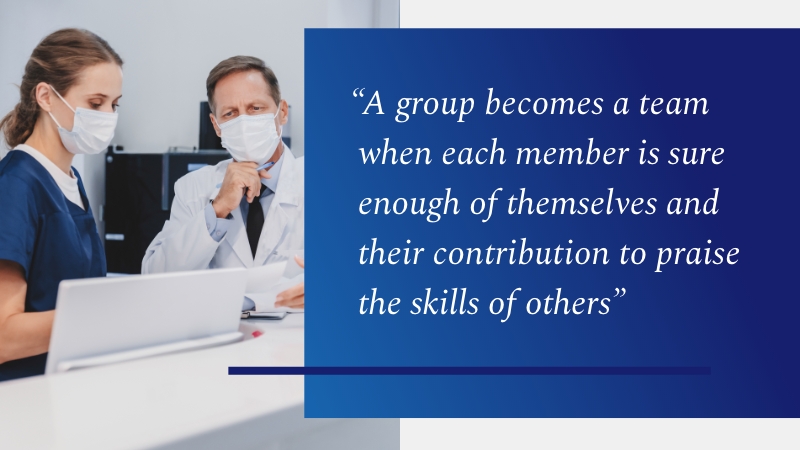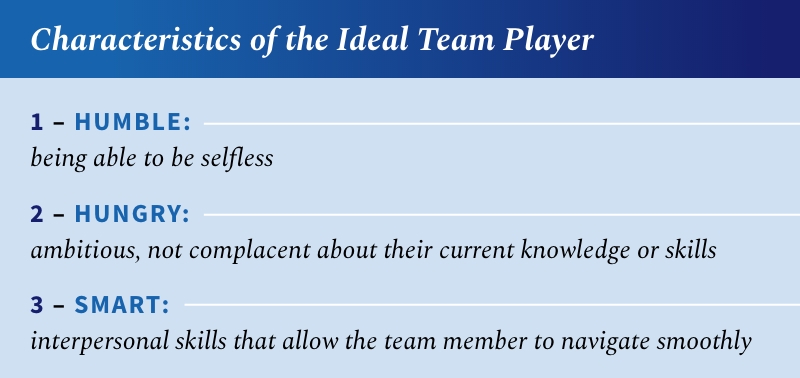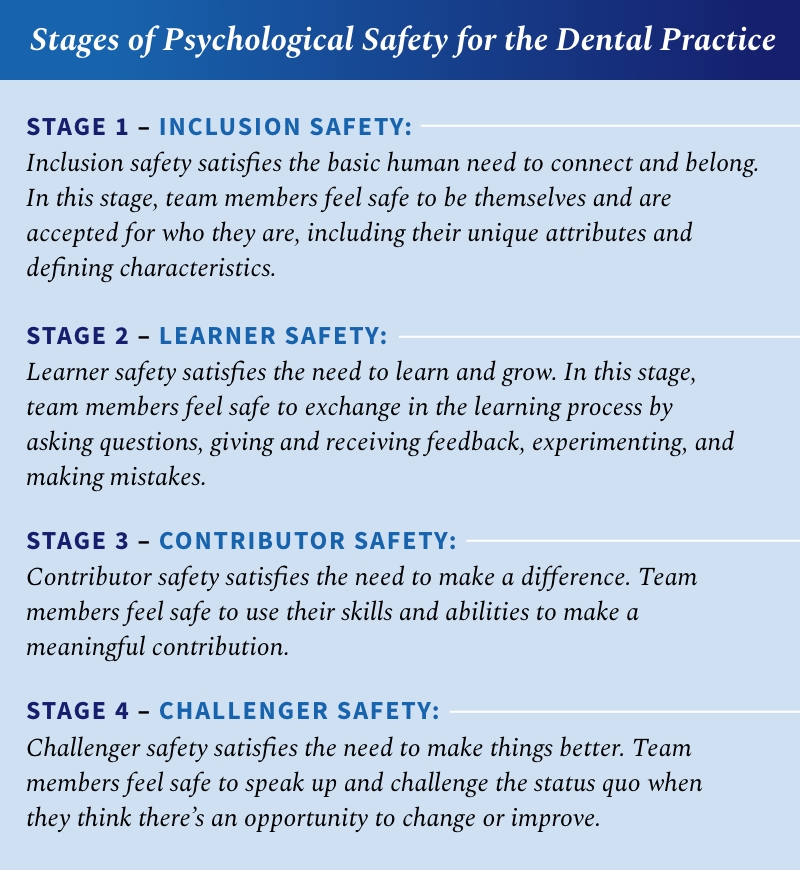Creating Psychological Safety in the Dental Practice – Three Key Considerations
By Ricardo Mitrani on September 17, 2021 |We recently published an article on the importance of psychological safety in a healthcare organization — specifically a dental practice — and what we can expect if we fail to foster it with our teams.
Communication influences everything that happens in a dental practice, and research strongly suggests that high-performing teams depend on open communication to succeed. It stands to reason that practice owners who actively nurture a sense of psychological safety will have more enjoyable, productive, and effective days in the dental practice.
Nonetheless, I can't help thinking of potential readers who still struggle to see themselves as both the cause and the solution for a lack of psychological safety in their practice. In this article, I'd like to discuss a few elements that I believe psychological safety is contingent upon, as well as a few guidelines for implementation in the dental office.

Assembling the Ideal Practice Team
The first element of psychological safety has to do with ensuring that you have the right people on the team. But what does an ideal team look like?
According to Patrick Lencioni's book The Ideal Team Player, a team member equipped to succeed must display three characteristics:

What is fascinating about these three traits is that they are both easy to assess objectively and easy to follow over time. In fact, one of my most popular Spear team meetings, Characteristics of Ideal Team Players, explores this topic in-depth and includes activities inviting team members to assess one another based on these three traits.
If a team member is struggling in one or more of these areas, there is a specific remedial course of action for each. I should caution, however, that the most difficult trait to teach anyone is humility. Either you have this one or you don't — and according to Lencioni, this characteristic may be the most pernicious threat to your organization to the extent of even recommending the removal of this person from the team altogether.
I understand that this is much easier said than done. Letting a member of any healthcare organization go normally comes with a big price to pay — particularly if this person was an integral or long-standing part of your team. Trust me; I've been there and done that, and I can say with experience that this is only a fraction of the price your team will end up paying if this person remains in your organization.
My favorite quote that frames the “ideal team” sentiment is one from author Norman Shidle, which is also written on one of the walls in my practice as a reminder of what we stand for.
“A group becomes a team when each member is sure enough of their contributions, to praise the skills of others.”
– Norman Shidle
Unleash and Harness Paradox
The next consideration for creating psychological safety in the practice has to do with designing constraints or guardrails within your communication systems. This ensures your organization does not become a festival of unimplemented ideas that ultimately lead to frustration with the team. This will also help team members who may rightly worry, 'what good does it do to speak up if no one is listening to me?'
Harvard Business School professor Linda Hill and her partners at Paradox Strategies looked at a subset of companies and teams around the world to find what best practices they shared. The research culminated in a bestselling book, Collective Genius: The Art and Practice of Leading Innovation, which highlights a key element for benefiting from greater psychological safety within a team. The concept is what the team dubbed the Unleash and Harness Paradox.
This term refers to an environment where team members can stop grappling about a specific idea not being carried out and instead feel great about being part of the process that led to the team's chosen course of action. This allows everyone to feel heard while ensuring the organization succeeds.
How can you create this micro-democratic environment in your own practice?
The Question Formulation Technique
One of the ways my practice was able to create this environment was through early adoption of the Question Formulation Technique (QFT)®. This technique was designed by authors Dan Rothstein and Luz Santana, founders of the Right Question Institute in Massachusetts and coauthors of their Harvard Press best-selling book, Make Just One Change.
The Question Formulation Technique is designed to develop and apply all three thinking processes:
- Divergent thinking
- Convergent thinking
- Metacognition
This approach begins with a focus question from which the team then embarks on the first stage, which consists of a 10-minute brainstorming session during which everyone is invited to ask questions about the chosen focus area. Focus questions should be open-ended enough to invite diverse suggestions (e.g. Increasing production in everyday practice).
At this first stage, the rules are simple: Capture the questions as they are framed, don't challenge them, and don't modify any of them. This taps into the group's divergent thinking.
The next step involves analyzing, prioritizing, ordering the questions, and changing open-ended questions to closed and vice versa. This step consolidates everyone's voice and capitalizes on convergent thinking.
Lastly, the team taps into their metacognition skills, which essentially frames a take home message where everyone involved feels proud to have been involved in the process, regardless of the course of action the group has chosen to take.
Once you have assembled a solid team, your job as a practice leader is to provide the right context (e.g. focus area) to the team so that they can carry out the integral portion of the brainstorming experience. I should note that asking questions is a skill that not everyone possesses from the get-go, but it is one that can be trained and enhanced.
The Stages of Psychological Safety
Another great strategy to consider when incorporating psychological safety in your organization is a staged-based framework from the Center for Creative Leadership — and based upon Dr. Timothy Clark and his book The Four Stages of Psychological Safety — which incorporates some of the strategies mentioned earlier in this article.

Final Thoughts
I hope that embracing the Unleash and Harness paradox, the Question Formulation Technique and Dr. Timothy Clark's framework can give you a broader context of how you can foster greater psychological safety in your dental practice.
Importantly, the presence or lack of psychological safety is merely a symptom of a greater issue within the practice — that of the practice owner's ego. Stay tuned for an upcoming article discussing this concept in more depth.
Ricardo Mitrani, D.D.S., M.S.D., is a member of Spear Resident Faculty.
References
- Lencioni, P. M. (2016). The ideal team player. John Wiley & Sons.
- Hill, L., Brandeau, G., Truelove, E., Lineback, K. (2014). Collective genius: The art and practice of leading innovation. Harvard Business Review Press.
- Rothstein, D., Santana, L., & Puriefoy, W. D. (2017). Make just one change: Teach students to ask their own questions. Harvard Education Press.
- Clark, T. R. (2020). The 4 stages of psychological safety: Defining the path to inclusion and Innovation. Berrett-Koehler Publishers, Incorporated.